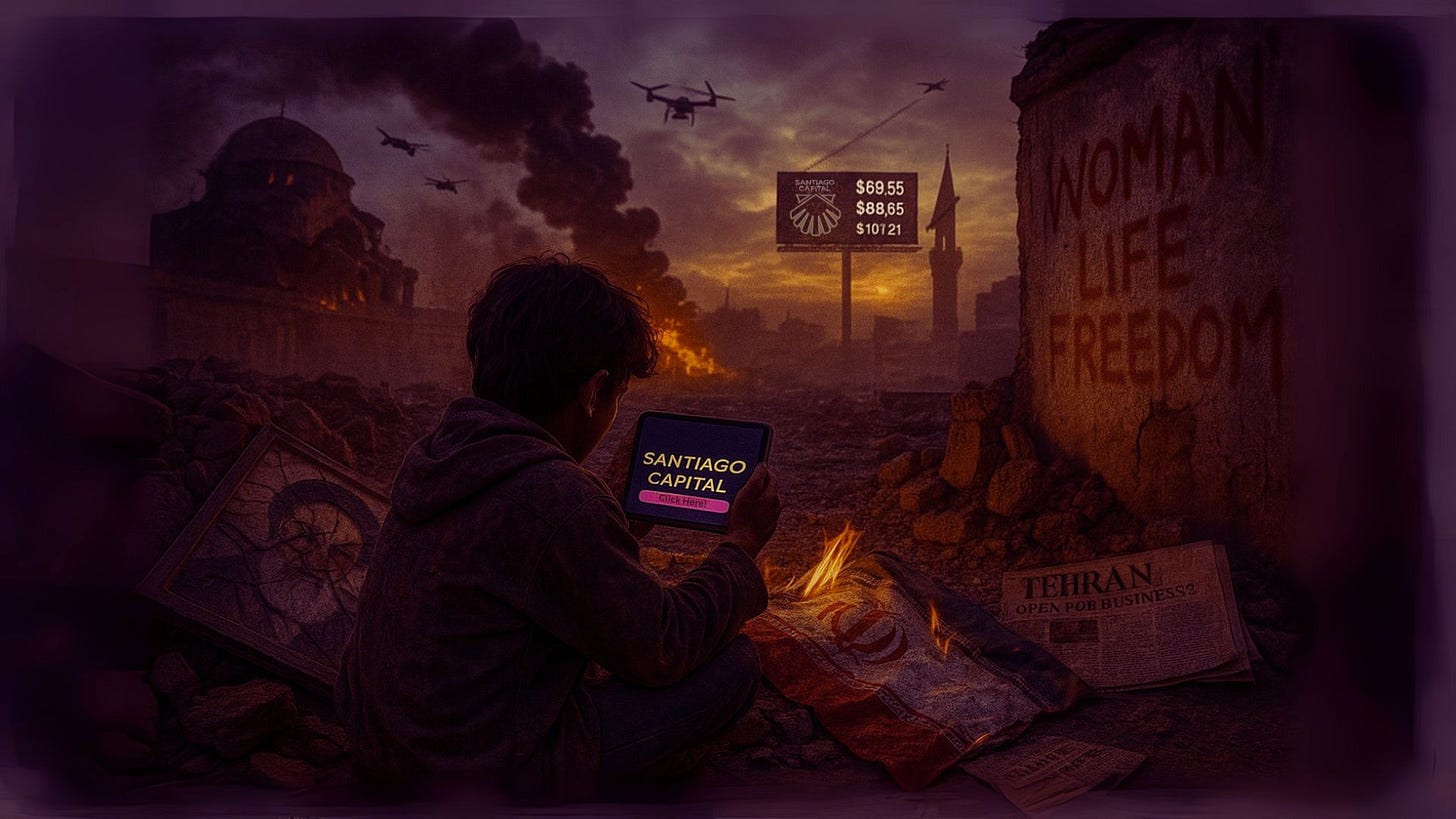“For America, the chief geopolitical prize is Eurasia. Now a non-Eurasion power is preeminent in Eurasia - and America’s global primacy is directly dependent on how long and how effectively its preponderance on the Eurasian continent is sustained.”
Zbigniew Brzezinski
Executive Summary
In geopolitics, nothing changes for decades—until it does.
Regimes that seemed untouchable on Monday can be hanging by a thread by Friday.
Empires crumble faster than anyone dares to predict. The illusion of permanence is often just that—an illusion.
We are not writing today about Iran because it’s suddenly investable. We’re writing about it because in today’s world, geopolitical instability and capital market structure are no longer separate subjects.
As we’ve noted in previous pieces—particularly in our discussions of Michael Every’s "Grand Macro Strategy"—sovereign priorities now shape liquidity, asset flows, and trade architecture.
And if we are serious about understanding the future of global markets, we cannot afford to ignore the possibility, however remote, of a reintegrated Iran.
We are talking about Iran now because the long-anticipated has finally arrived: a coordinated strike by Israel and the United States on Iran’s nuclear facilities and military leadership.
This wasn’t a surprise—it was a scenario long discussed in policy circles and war-gamed behind closed doors.
What’s changed is that it’s no longer hypothetical. That red line has been crossed, and with it, the strategic assumptions that have underpinned Iran’s deterrence posture have collapsed. Ignoring that would be ignoring the elephant in the room.
Just one year ago, the idea that Iran might undergo regime change was inconceivable to most.
Yet in the months since, its regional proxies have been dismantled or rendered ineffective. Syria’s ruling family, long a cornerstone of Iranian influence, has collapsed.
These events landed hard before the unprecedented air attacks by Israel and the United States targeted the heart of Iran’s command structure and nuclear infrastructure.
Iran now finds itself in its most vulnerable position since the 1979 Islamic Revolution.
Should it attempt to restart its nuclear program, it would likely face additional strikes—this time without Hamas or Hezbollah offering any meaningful deterrence or offensive cover.
Its air defenses have been obliterated.
Missile launchers and manufacturing plants have been decimated—an unthinkable state of affairs just a year ago. And the silence from traditional allies like Russia and China has been deafening. That silence has only emboldened the Trump administration to go further.
The economic picture is no better.
Decades of sanctions have gutted the Iranian economy. Inflation runs rampant. The banking system is in collapse. Nearly half a century of repressive governance has left the population exhausted and fragmented.
Still, is regime change truly possible?
Not long ago, the question would’ve drawn laughter. Today, it draws serious inquiry. Internal opposition remains fractured and weak. Uprisings have flared and faded. Western powers are understandably hesitant to risk a Libya-style vacuum.
Yet Iran’s neighbors would welcome a change in leadership. So would Washington and Tel Aviv.
Enough of Iran’s political and military leadership has been hollowed out to make the regime’s vulnerability plain. Israel continues to signal that the remaining leadership remains in its crosshairs.
President Trump has declared that Supreme Leader Khamenei is not a target—“for now.”
Everything and nothing seems possible. Regime change is rarely gradual. It arrives in bursts—unexpected, disorienting, and fast. Iran may be nearing that threshold.
And if it does cross over, what would a new Iran look like?
This is not a country of ruins. It is a country with vast natural resources, a young and highly educated population, and some of the best demographics in the world.
Twelve months ago, the idea of Hezbollah, Hamas, and Assad’s Syria falling in succession seemed far-fetched.
Today, those dominoes lie flat. Through a combination of stealth, black ops, infiltration, and unconventional warfare, what was once thought impregnable has been dismantled with surgical precision.
Iran’s leadership knows the message applies to them as well. They are not only not untouchable. They are gettable.
And if the impossible becomes reality—if this regime falls—what then?
Regime changes rarely come politely. They unfold in chaos. One day everything seems locked in place. The next day, it isn’t. If Iran has reached that moment, then the real question becomes unavoidable:
What comes after?
What might a reintegrated Iran look like?



